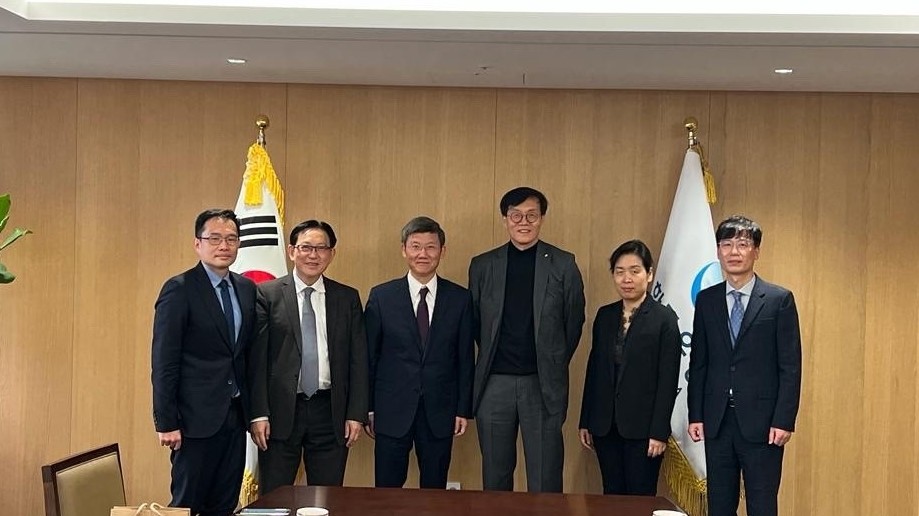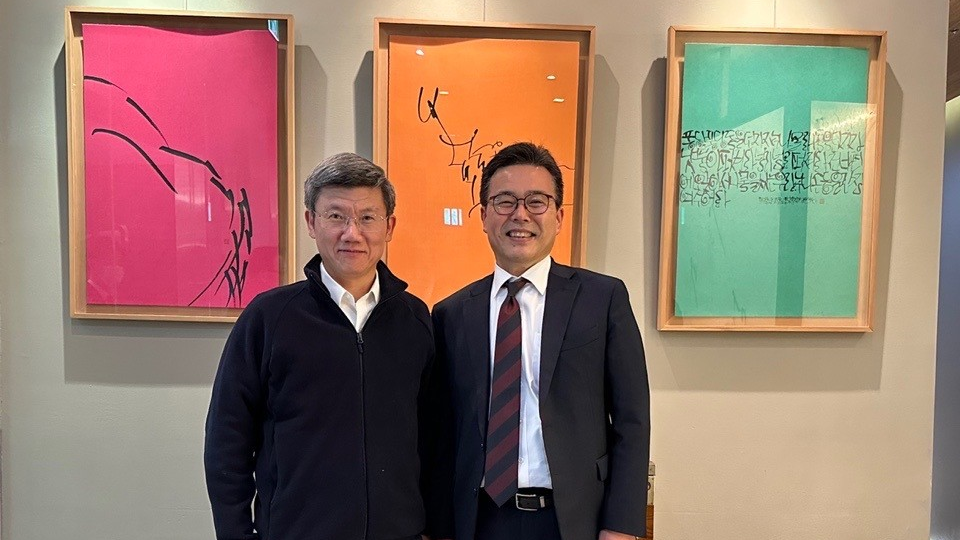
Image: f11photo / Shutterstock.com
SINGAPORE, December 16, 2022 – The Korean economy has recovered strongly since 2021, reflecting a high vaccination rate, strong policy stimuli, and a rebound in manufacturing. However, the near-term outlook has deteriorated due to tighter financial conditions and weakening external demand. As headwinds have mounted, the authorities need to recalibrate the pace of monetary and fiscal tightening flexibly and prudently, and continue their effort to preserve financial stability. This is according to the preliminary assessment by the ASEAN+3 Macroeconomic Research Office (AMRO) after its Annual Consultation Visit to Korea from November 28 to December 9, 2022.
The AMRO team was led by Lead Economist, Dr. Kevin Cheng, while AMRO Director, Dr. Li Kouqing, and Chief Economist, Dr. Khor Hoe Ee participated in the policy meetings. The discussions focused on recent economic developments and outlook, risks and vulnerabilities, and policy response.
Economic developments and outlook
“The Korean economy is forecast to moderate to 1.9 percent in 2023 after a strong growth of 2.6 percent in 2022,” said Dr. Cheng. “Elevated external headwinds from weakening global demand and tightening domestic financial conditions call for skillful recalibration of policy mix to support the economy and contain inflation.”
The outlook for near-term growth in 2023 has deteriorated, as private consumption and exports are forecast to decelerate and investments are expected to remain weak amid tighter financial conditions and weakening external demand.
Headline inflation has peaked and is expected to gradually decline to an average of 3.0 percent in 2023 from 5.0 percent in 2022. Despite the broad-based and rapid increases in inflation and a tight labor market, an inflation-wage spiral appears unlikely. Short-term inflation expectations have been high, while long-term expectations remain well-anchored.
The external sector has been resilient despite widening trade deficits and some decline in foreign reserves. The current account surplus is forecast to narrow from 4.9 percent of GDP in 2021 mainly due to trade deficits. Despite the recent decline, foreign reserves remain ample at US416 billion, covering about 2.4 times short-term external debts and about six months’ worth of imports.
Risks and vulnerabilities
Risks to the economic outlook are tilted to the downside in the near term, with high uncertainty surrounding the baseline forecast.
Short- and medium-term risks include renewed commodity price hikes, supply chain disruptions, faster-than-expected policy rate hikes by the Fed, the stress in household and corporate debts, a sharper economic slowdown in advanced economies and a weaker-than-expected recovery in China.
Over the medium term, although household and corporate debts are generally sound, a rising interest burden and a slowdown of demand could lead to the distress of vulnerable families and businesses. There could be vulnerabilities arising from some land developers and small securities companies which have significant exposure to project financing in real estate.
Policy recommendations
A combination of monetary and fiscal tightening is necessary in the near term, but should be carefully calibrated to support the economy and contain the high inflation.
While unwinding the broad-based fiscal stimulus measures is appropriate in light of the strong recovery, the government should continue to provide targeted support for vulnerable sectors and groups affected by high inflation, and strengthen the social safety nets as automatic stabilizers. Expediting fiscal consolidation efforts is warranted and should be supported by an effective and credible fiscal rule. Moreover, long-term fiscal risks arising from aging should be addressed preemptively with a comprehensive approach.
The pace of monetary policy tightening should continue to be data-dependent weighing inflation against economic recovery and financial imbalances. The current policy stance is appropriate as inflation is expected to remain above the target for some time. However, the Bank of Korea should adjust its policy pace in a flexible, prudent and forward-looking manner to respond to the economic slowdown and increased financial stability risks.
Amid monetary tightening and economic slowdown, the authorities should closely monitor debt servicing of vulnerable borrowers. Banks’ capital and liquidity buffers should be maintained at their current high levels, while the financial buffers of riskier non-bank financial institutions should be strengthened. The deregulation of the housing market should be complemented by adjusting the new housing supply plan to stabilize the market.
The authorities are encouraged to continue developing financial technology to promote economic efficiency and maintain their commitment to reducing carbon emissions while managing the impact during the transition.
AMRO would like to express its appreciation to the authorities and other meeting counterparts for open and constructive discussions and their hospitality.
–
About AMRO
The ASEAN+3 Macroeconomic Research Office (AMRO) is an international organization established to contribute towards securing macroeconomic and financial stability of the ASEAN+3 region, comprising 10 members of the Association of Southeast Asian Nations (ASEAN) and China; Hong Kong, China; Japan; and Korea. AMRO’s mandate is to conduct macroeconomic surveillance, support the implementation of the regional financial arrangement, the Chiang Mai Initiative Multilateralisation (CMIM), and provide technical assistance to the members.

From L to R: Mr. Kevin CHENG, Group Head and Lead Economist, AMRO; Mr. Hoe Ee KHOR, Chief Economist, AMRO; Mr. Kouqing LI, Director, AMRO; Mr. Chang Yong RHEE, Governor of Bank of Korea; Ms. Hyunjoo RYOU, Director General of International Affairs Department; Mr. Sanggon KWAK, Head of Financial Cooperation Team

From L to R: Mr. Kouqing LI, Director, AMRO and Mr. Seong-Wook KIM, Deputy Minister for International Affairs, Korea Ministry of Economy and Finance
